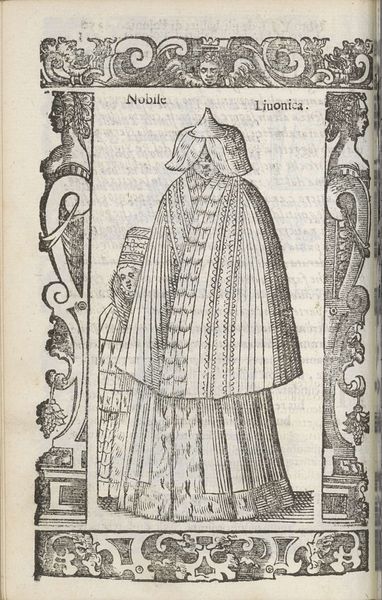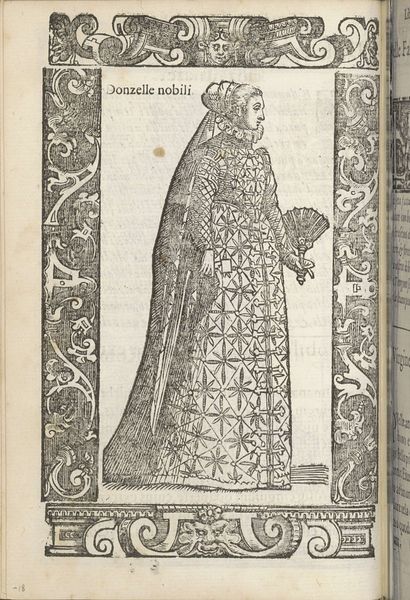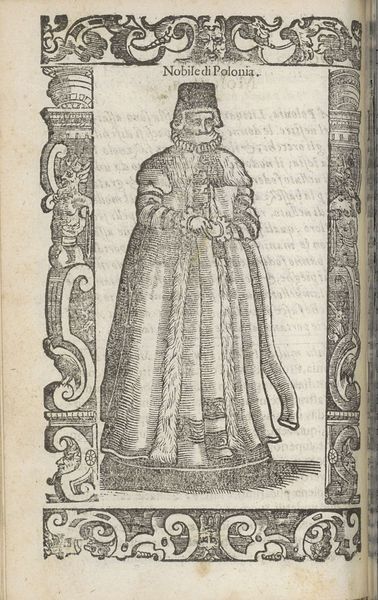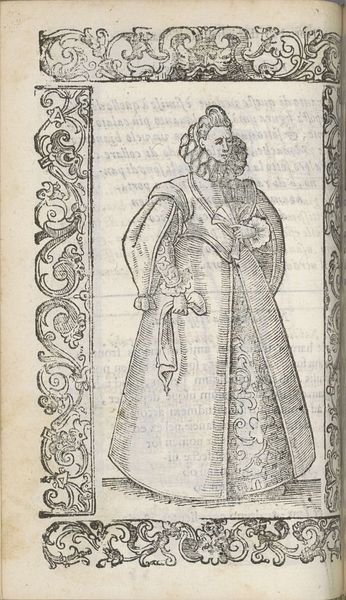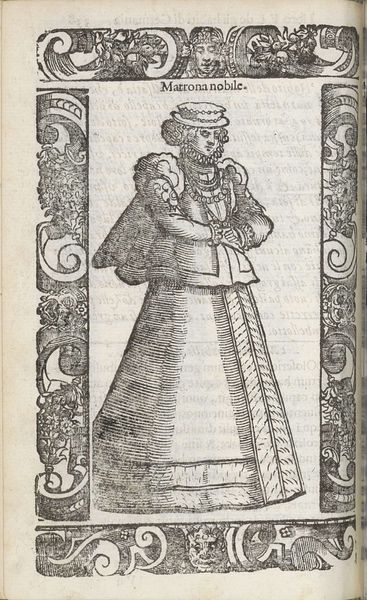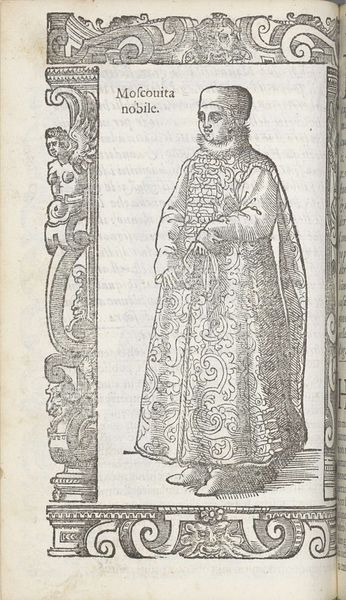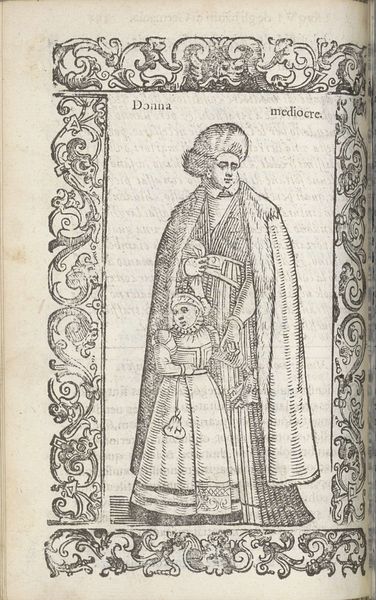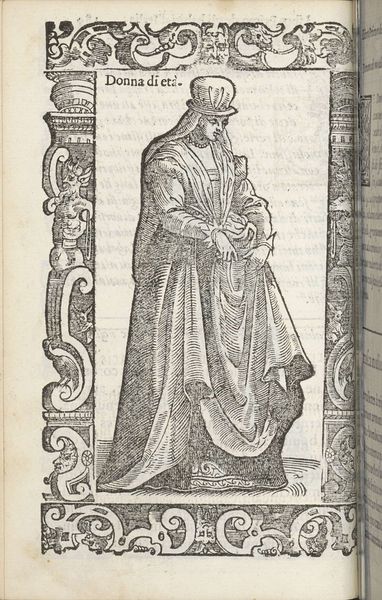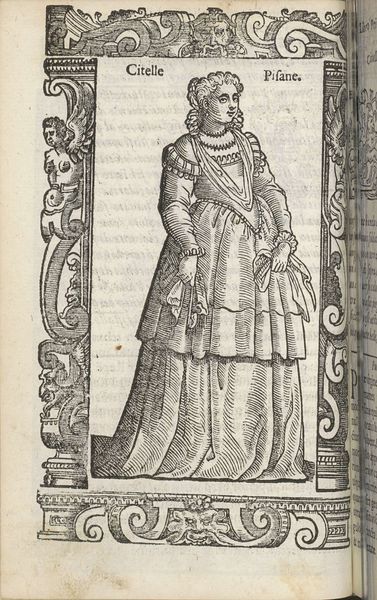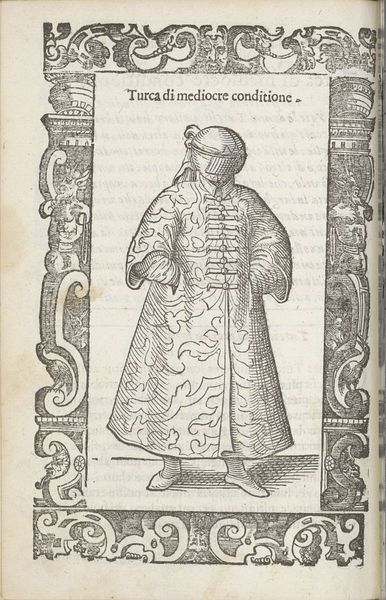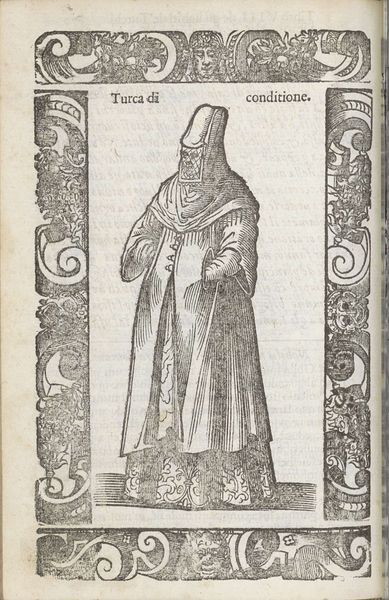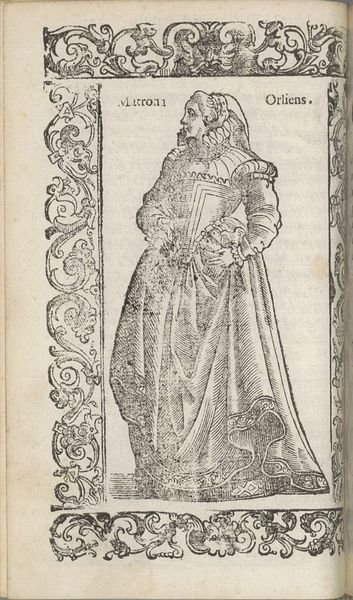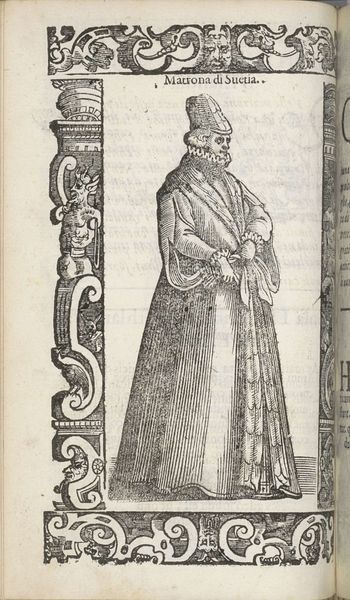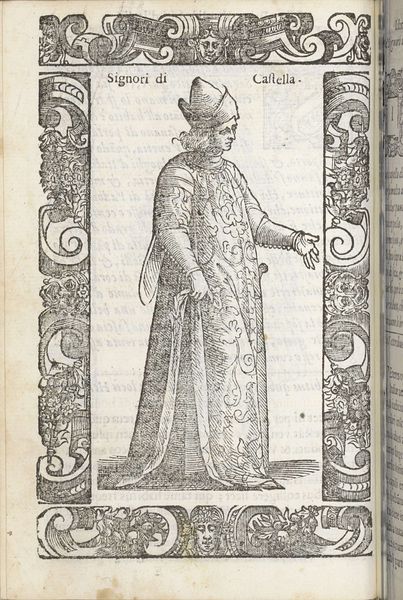
drawing, print, ink, engraving
#
portrait
#
drawing
#
pen drawing
# print
#
figuration
#
11_renaissance
#
ink
#
history-painting
#
northern-renaissance
#
engraving
Dimensions: height 167 mm, width 125 mm
Copyright: Rijks Museum: Open Domain
Editor: So, this is Christoph Krieger's "Matrona (Nap.)" from 1598, created using engraving techniques. It looks like a page from a book. What I find most compelling is how the artist utilizes pattern to articulate the figure’s elaborate garments and ornament. How do you interpret this visual language of forms and lines? Curator: Indeed. If we observe closely, the composition hinges upon the strategic use of contrasting textures. The dress is bisected horizontally into a heavily-ornamented torso and diamond-patterned skirt, each delineated with intricate detail. Note the relatively uniform hatch marks across the cape compared to the bold lines of the ornamental border—these contribute to a fascinating interplay between depth and flatness. Does this graphic reduction influence our perception of form and space? Editor: It certainly flattens the figure. The emphasis on line over shading gives it a rather decorative quality. Is the figure’s form secondary to the artistry displayed in her robes? Curator: Precisely! It directs our attention toward the intricate patterns. The lines aren't just descriptive; they dictate the structure. The meticulous details transform her robe into a field of visual intrigue. The linear density and the strategic placement of each stroke, create visual hierarchy within the picture plane. Consider, too, the mirroring of motifs across the borders; how do those choices speak to ideas of symmetry, order and representation? Editor: I see what you mean. The engraving pushes beyond simple depiction and engages us through complex relationships between figure, ground, and ornament. Curator: It is a testament to how the formal qualities of line, pattern, and texture can transcend mere representation. Editor: Looking at the visual composition alone has deepened my appreciation for the techniques and intention of early engraving.
Comments
No comments
Be the first to comment and join the conversation on the ultimate creative platform.
